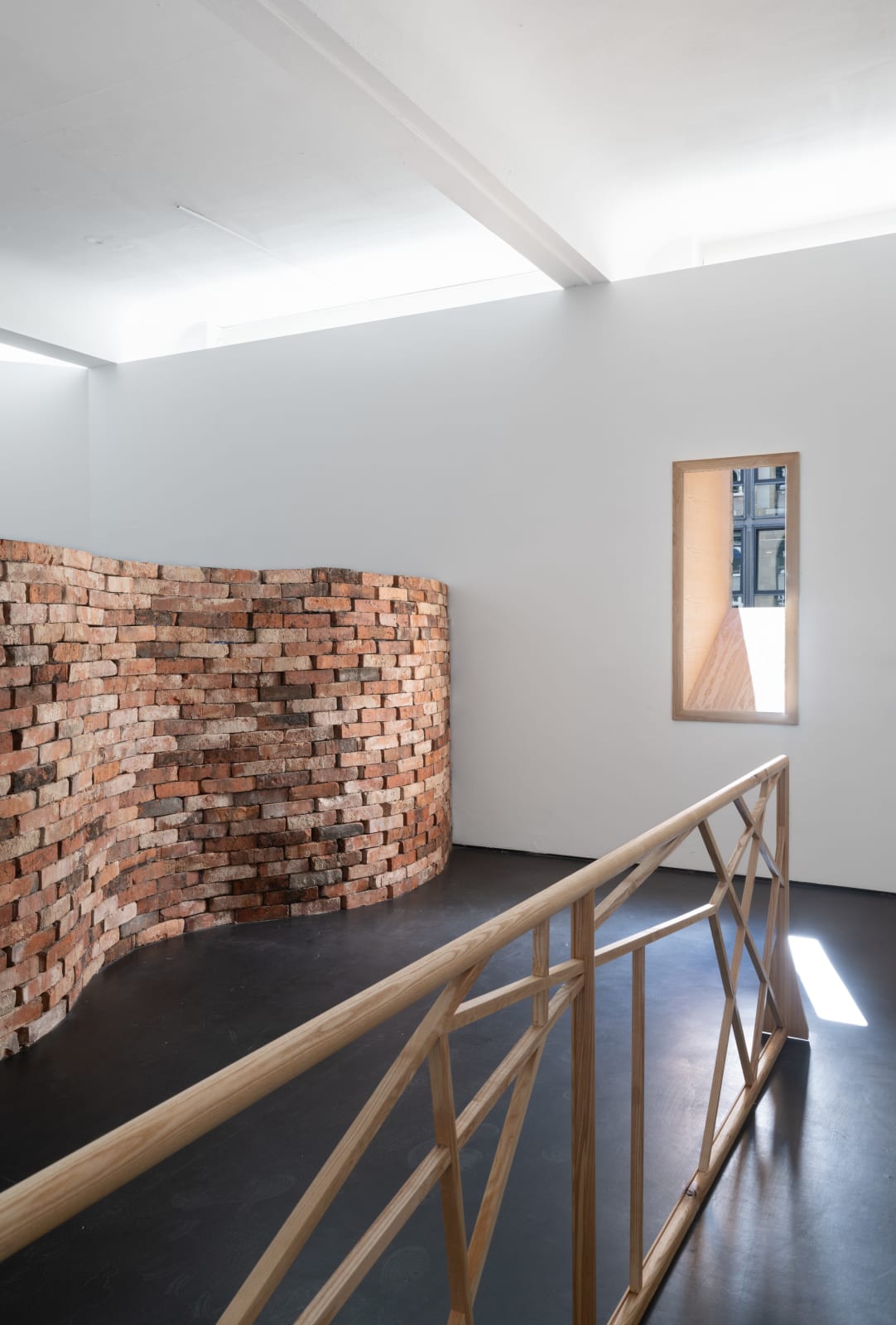-
Rindon Johnson
Fruit of the poisonous tree, Higher and more free! The music must always play, All the conventions conspire to make this fort assume the furniture of home; Lest we should see where we are, higher and more free! Lost in a haunted wood, What are the consequences of two different forms interacting? Ice on a bed of mint leaves. That’s what I thought in the early morning. Higher and more free! Breeze engine. If no is what it is then that’s what it is. Breeze Engine. Paint dries on walls. Bells chime at noon. Rivers flow through canyons. Enough. Enough. Enough. Enough. Enough., 2023Ash wood420 x 67.5 x 16.5 cm
165 3/8 x 26 5/8 x 6 1/2 inchesCopyright The ArtistPhoto: Marjorie Brunet PlazaFurther images
Die Skulptur „Fruit of the poisonous tree, Higher and more free! […]“ (2023) ist aus Eschenholz gefertigt und leitet als Handlauf in die Ausstellung. Als Infrastruktur dient sie als Stütze...Die Skulptur „Fruit of the poisonous tree, Higher and more free! […]“ (2023) ist aus Eschenholz gefertigt und leitet als Handlauf in die Ausstellung. Als Infrastruktur dient sie als Stütze und versperrt gleichzeitig den direkten Zugang zum Raum. Johnsons wiederkehrende architektonische Interventionen reflektieren soziale Systeme und deren physische Manifestationen im Raum und verweisen auf Ungleichheiten und ausgrenzende Eigenschaften. Er thematisiert die Folgen dieser Konventionen und die Unterrepräsentation bestimmter sozialer Gruppen in den gesellschaftlichen Strukturen. Indem er die Betrachtenden in einem performativen Akt durch die Ausstellung führt, macht er die Manipulation der Architektur konkret erfahrbar – etwa den Einfluss einer Wand im Raum oder fensterlose Öffnung „Examples: laughter in the morning and tears in the afternoon […]“ nach Außen. Johnson schafft einen Parcours durch die Ausstellung, in dem er Konventionen aufbricht. Die asymmetrische geometrische Struktur der Skulptur basiert auf der Zahl fünf, die Johnson und Hamilton als Grundlage des Romans „Clattering“ verwenden, um die Vielfalt der Möglichkeiten und eine Kollektivität jenseits unserer vertrauten Binarität zu beschreiben. In dem Science-Fiction-Roman sind fünf Personen notwendig, um Nachkommen zu zeugen. „At some point I became very interested in what it might actually take to make a person. I wondered what if it took more people. What if we didn't replicate based on a binary but on a grouping of more people.”
The sculpture “Fruit of the poisonous tree, Higher and more free! [...]” (2023) is made of ash wood and acts as a handrail leading into the exhibition. As infrastructure, it serves as a support while blocking direct access into the space. Johnson's recurring architectural interventions reflect social systems and their physical manifestations in space, referencing inequalities and exclusionary qualities. He addresses the consequences of these conventions and the underrepresentation of particular social groups in social structures. By guiding viewers through the exhibition in a performative act, he allows them to specifically experience the manipulation of architecture - such as the influence of a wall in the room or the opening “Examples: laughter in the morning and tears in the afternoon [...]” to the outside. Johnson creates a procession through the exhibition in which he breaks down convention. The asymmetrical geometric structure of the sculpture is based on the number five, which Johnson and Hamilton use as the basis of the novel “Clattering” to describe the multiplicity of possibilities and a collectivity beyond our familiar binary. In the science fiction novel, five characters are necessary to create offspring. "At some point I became very interested in what it might actually take to make a person. I wondered what if it took more people. What if we didn't replicate based on a binary but on a grouping of more people."











